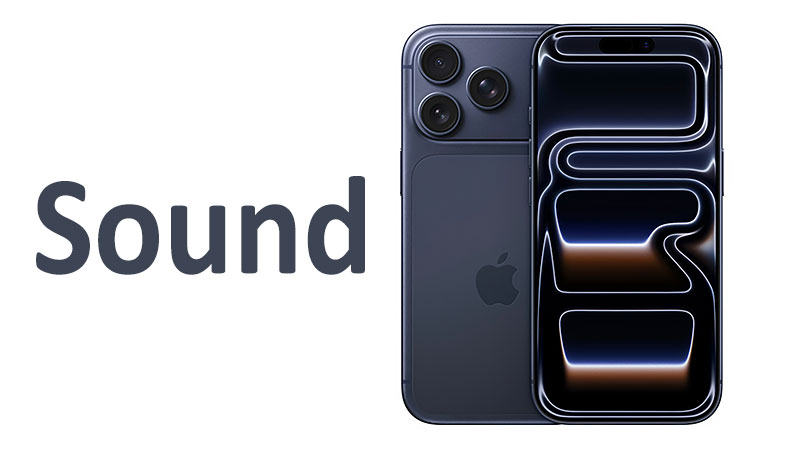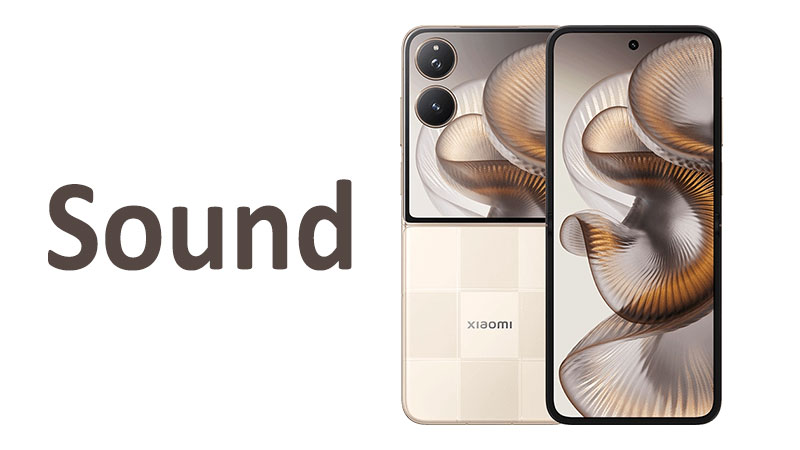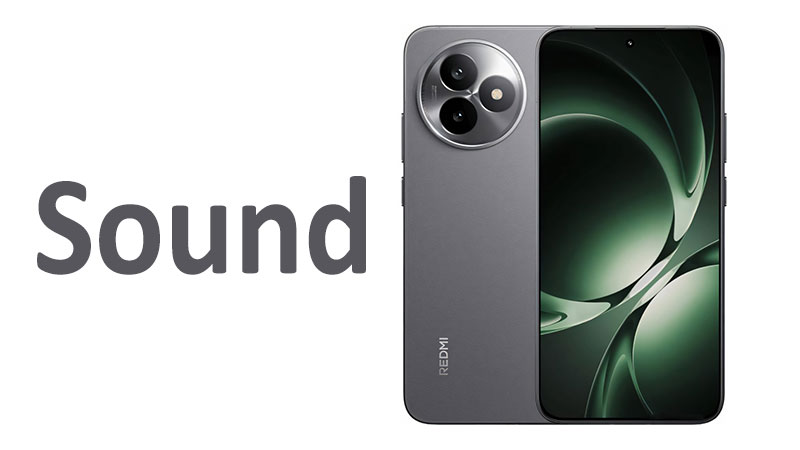Audio quality plays a critical, yet often overlooked, role in the modern smartphone experience. Your phone is your primary device for consuming media, making calls, and capturing memories. Therefore, excellent sound is essential. The Apple iPhone 17 Pro Sound and its integrated speakers have generated significant discussion this year. This flagship device offers numerous hardware and software enhancements. However, early user feedback on the iPhone 17 Pro audio quality presents a mixed picture. This comprehensive review will delve into every aspect of the new audio system. We will explore its strengths, weaknesses, and the impact of its innovative new design. Understanding the audio performance is key before you make an upgrade decision.
The Speaker System: Design and Performance
Apple’s Pro-series iPhones maintain a stereo speaker setup. This arrangement utilizes the earpiece as one channel and a bottom-firing loudspeaker as the other. This configuration creates a more immersive soundstage, especially in landscape mode. For the iPhone 17 Pro, the physical design changes may influence speaker performance.
Speaker Hardware and Chassis Changes
The iPhone 17 Pro features a major internal redesign. Apple switched the frame material from titanium to aerospace-grade aluminum. This aluminum is reportedly 20 times better at conducting heat. The change directly supports the new vapor chamber cooling system. This new thermal architecture is primarily for the powerful A19 Pro chipset. However, it also changes the internal acoustics.
The phone’s new structure provides more space for internal components. This includes a larger battery, as noted by Apple and confirmed by teardowns. The change in internal volume and material could theoretically enhance speaker resonance and bass response. On the bottom, the USB-C charging port remains flanked by microphone and speaker holes.
The Volume and Clarity Debate
Initial user reports show a significant disagreement regarding the iPhone 17 Pro speaker performance. Some users on forums have described the iPhone 17 Pro Max speaker as “very weak” compared to previous models. They claim max volume and media playback are noticeably lower than on the iPhone 15 Pro Max. This suggests a potential step backward in raw power.
Conversely, some reviewers praise the sound’s clarity and fullness. It is a classic trade-off: volume versus fidelity. It seems the iPhone 17 Pro might prioritize distortion-free sound at lower volumes over maximum loudness. This difference in perception makes a definitive judgment difficult. Buyers should try to test the sound themselves in a quiet environment.
Specialized Comparison: iPhone 17 Pro vs. iPhone 14 Pro Max
Comparing the iPhone 17 Pro speakers to the older iPhone 14 Pro Max highlights a distinct tonal shift. The 14 Pro Max often received praise for its clear high frequencies and excellent stereo separation. In contrast, the 17 Pro Max sometimes sounds more midrangey.
Reviewers noted a poor stereo image and a muffled quality on the 17 Pro Max. This issue might stem from a design change. The top edge speaker gap appears smaller, possibly to minimize the gap between the screen and the phone edge. A smaller acoustic cavity sacrifices some sound quality. However, some users report the muffled quality improves after a “break-in” period. This suggests a potential software calibration issue or speaker diaphragm settling.
Advanced Audio Software Features
The audio experience extends far beyond the physical speakers. Apple integrates powerful computational audio features through its iOS 26 software and the A19 Pro chip. These features enhance both recording and playback.
Computational Audio: Spatial and Mix Features
The iPhone 17 Pro continues to support Spatial Audio. This feature provides an immersive, three-dimensional listening experience with compatible content and AirPods. This makes watching movies and playing games incredibly engaging. Furthermore, new software features add professional-grade audio capabilities for creators.
A key feature is Audio Mix. This was initially a major upgrade on the iPhone 16 Pro. Audio Mix uses advanced machine learning to adjust sound after video capture. Features include:
- In Frame: Isolates the voice of the person visible on camera.
- Studio Mix: Attempts to simulate a professional studio recording, reducing ambient noise and reverb.
- Cinematic Mix: Prioritizes the main subject’s voice while subtly pushing distracting background sounds away.
These tools are invaluable for content creators. They allow for clean, high-quality audio even when filming in less-than-ideal environments. For instance, wind noise reduction is another computational feature that minimizes unwanted noise in outdoor video.
The Apple Spatial Audio Format (ASAF)
The future of Apple audio is tied to the new Apple Spatial Audio Format (ASAF). This standard is designed to position sound objects relative to real-world space. For example, a virtual sound object can appear to stay stationary even if you move your head or walk around.
ASAF uses the Apple Positional Audio Codec (APAC). While it may not offer true lossless audio, its bitrates are consistent with high-quality streaming services like Netflix. ASAF is strongly integrated with visionOS but is also coming to iOS 26. This technology prepares the iPhone 17 Pro for a future in augmented and virtual reality.
iOS 26 and New Audio Utility Features
The operating system brings several quality-of-life updates that improve audio use:
- Custom Ringtones: Users can now set custom ringtones easily without needing complex tools like GarageBand.
- Hold Assist: This new phone feature holds the line for you when you are on hold. It then alerts you when a live agent is available.
- Enhance Dialogue: This option mutes background sounds to improve speech clarity in videos and podcasts.
- Apple Music AutoMix: This uses intelligence for seamless transitions between songs. It uses techniques like time stretching and beat matching.
These features make daily audio interactions more pleasant and efficient for the user.
Headphone and Wireless Audio Experience
Most Pro users rely on connected audio devices for the best experience. The iPhone 17 Pro’s wired and wireless performance is extremely important.
USB-C Audio and Port Limitations
Like its predecessors, the iPhone 17 Pro lacks a 3.5mm headphone jack. Users must rely on USB-C earbuds or a USB-C to 3.5mm adapter for wired audio. This is standard for modern smartphones. The A19 Pro chip and new N1 networking chip ensure efficient audio processing and power management.
Next-Generation Wireless Connectivity
The iPhone 17 Pro features the new Apple-designed N1 networking chip. This chip enables Wi-Fi 7 and Bluetooth 6. Bluetooth 6 provides improved efficiency and stability for wireless audio connections. This results in fewer dropouts and a better connection to devices like AirPods.
AirPods Pro 3 Synergy
The iPhone 17 Pro launched alongside the new AirPods Pro 3. This new version features a “multiport acoustic architecture.” This new design promises even better spatial listening and Active Noise Cancellation (ANC). The synergy between the A19 Pro in the phone and the chips in the AirPods Pro 3 likely unlocks the ultimate mobile audio experience. New features like Live Translation and Conversation Boost further utilize the computational power of both devices.
Comprehensive Pros and Cons
A balanced review requires a clear look at the advantages and disadvantages of the iPhone 17 Pro’s sound system.
Pros of the iPhone 17 Pro Audio
| Feature | Benefit |
| Computational Audio | Professional-grade video sound via Audio Mix. |
| Spatial Audio Support | Deeply immersive, three-dimensional soundstage. |
| New ASAF Standard | Future-proofs the phone for augmented reality audio. |
| A19 Pro Chip | Drives high efficiency and complex sound processing. |
| Bluetooth 6/Wi-Fi 7 | Extremely stable and low-latency wireless audio. |
| Acoustic Redesign | Potential for a richer, more “full” sound experience. |
Cons of the iPhone 17 Pro Audio
| Feature | Drawback |
| Speaker Volume | Some reports indicate noticeably lower maximum volume. |
| Tonal Shift | Speakers can sound more “midrangey” and less clear than previous models. |
| Stereo Image | Some users report a less defined stereo separation than on older iPhones. |
| No Headphone Jack | Wired audio still requires a USB-C adapter. |
| New Design Issues | Reduced speaker gap may contribute to muffled sound in some units. |
Important Buyer Considerations
Potential buyers of the iPhone 17 Pro should weigh several factors before committing. The audio quality is a subtle, yet significant, part of the overall experience.
Media Consumption Focus
The iPhone 17 Pro offers an excellent multimedia experience. Its display is brighter and less reflective. This is paired with an immersive Spatial Audio playback capability. If you watch movies or play games with high-end wireless headphones, you will find the audio quality exceptional. The latest Bluetooth and computational audio features are a powerful combination.
Creator and Professional Use
The Audio Mix features are a game-changer for content creation. Professional users, videographers, and social media creators will appreciate the on-device tools. These features clean up audio tracks without complex post-production. The iPhone 17 Pro positions itself as a miniature studio, not just a camera.
The Speaker Quality Variance
The most important caveat is the inconsistency in speaker quality reports. Early adopters noted a potential “muffled” sound. This may be due to quality control variations or simply new hardware needing calibration time. If you use your phone speakers often, try to listen to a unit in person first. Alternatively, ensure you purchase from a retailer with a good return policy.
Competition Comparison
Competitors, particularly high-end Android flagships, often feature powerful, loud speakers. While the iPhone focuses on fidelity and computational enhancements, it might lose out on sheer volume. If maximum loudness is your priority, some competitor models might still be a better choice. The iPhone 17 Pro’s strength lies in the seamless integration with the Apple ecosystem and its advanced software.
Conclusion
The Apple iPhone 17 Pro Sound system represents a technological leap forward in several key areas. The advanced A19 Pro chip drives incredible computational audio features. These features include Audio Mix and Spatial Audio. They significantly enhance both recording and playback quality, especially for professional users. The adoption of the new ASAF format, alongside Bluetooth 6 and Wi-Fi 7, secures its place as a future-proof audio device.
However, the experience with the integrated iPhone 17 Pro speakers is not universally perfect. The new chassis design, while improving thermal management, may have compromised the speakers’ acoustics. This leads to user complaints of lower volume and a muffled, mid-heavy sound. For users relying heavily on the external speakers, this is a notable concern.
Ultimately, the iPhone 17 Pro audio quality is exceptional when paired with AirPods Pro 3 or other high-end headphones. For creators, the on-device audio tools are unmatched. If you are an audiophile who primarily uses headphones or a content creator, the iPhone 17 Pro is an easy choice. If loud, external speakers are a must, proceed with caution and verify the sound quality yourself.
FAQ
Does the iPhone 17 Pro have a 3.5mm headphone jack?
No, the iPhone 17 Pro uses the USB-C port for wired audio connections. Users need to use a USB-C to 3.5mm adapter or USB-C headphones.
What is the main improvement for video recording audio?
The primary improvement is the Audio Mix feature. It uses machine learning to clean up video sound. It can isolate voices, reduce noise, and simulate a studio-quality recording.
Are the iPhone 17 Pro speakers louder than previous models?
User feedback is mixed. Some report the volume is noticeably lower than models like the iPhone 14 Pro Max or 15 Pro Max. This suggests Apple may have prioritized clarity over maximum loudness.
What new wireless audio technology is included?
The iPhone 17 Pro supports Bluetooth 6 and is powered by the new N1 networking chip. This provides more stable, efficient, and low-latency connections to wireless headphones.
What is the Apple Spatial Audio Format (ASAF)?
ASAF is a new Apple standard that positions sound objects in a three-dimensional, real-world space. It allows sounds to remain fixed in location as you move around while using Apple’s AR/VR platforms.



